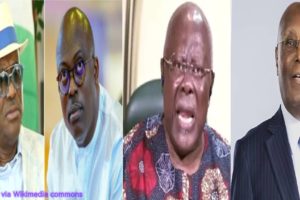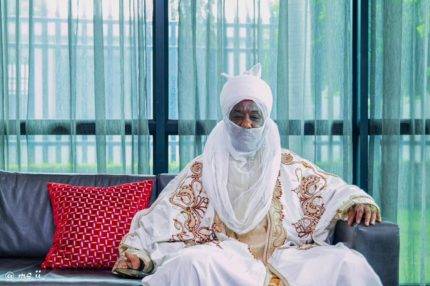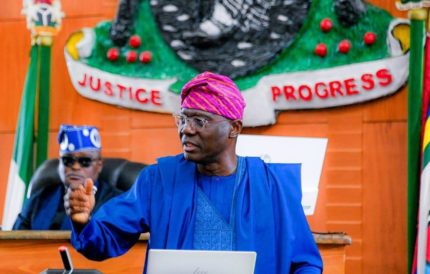Sanusi Lamido Sanusi II, once dethroned amid one of the most intense clashes between political and traditional institutions in Nigeria, has made a historic return to his former position as the Emir of Kano. This reinstatement marks a significant twist in his storied career, one that began with his tenure as the Governor of the Central Bank of Nigeria (CBN) before he ascended to the throne of his forebears. Many had believed his removal was the end of his reign, yet the change in political landscape from Governor Umar Ganduje to Governor Abba Yusuf has paved the way for Sanusi’s remarkable comeback.
The reinstatement of Sanusi Lamido Sanusi has stirred a whirlwind of reactions across Kano and beyond. Supporters hail it as a bold correction of the previous administration’s decision, seeing it as a rightful restoration of traditional authority. Conversely, critics argue that the move is steeped in political maneuvering rather than a genuine attempt at justice. Regardless, the event signifies a profound moment in the political and cultural fabric of Kano, reshaping the narrative around traditional leadership and its interplay with contemporary politics.
Impact and Significance
Sanusi Lamido Sanusi’s return as the Emir of Kano is not merely a personal victory but a momentous occasion in the history of Nigerian traditional rulers. His dual status as both the 14th and 16th Emir of Kano sets a unique precedent, distinguishing his legacy among modern monarchs. This development resonates with historical parallels, such as the case of Oba Sikiru Kayode Adetona, the Awujale of Ijebu Ode, who also experienced dethronement and subsequent reinstatement, highlighting the complex interplay of fate, political influence, and traditional authority.
The reinstatement also reignites discussions on the role and relevance of traditional institutions in contemporary governance. As Sanusi Lamido Sanusi resumes his duties, his actions and policies will likely be scrutinized for their impact on both the cultural heritage and the socio-political landscape of Kano. This event underscores the enduring significance of traditional leadership in Nigeria, reminding us that these institutions, despite being ancient, continue to wield considerable influence in modern times.
From the Bank to the Throne: The Rise and Fall of Sanusi Lamido Sanusi
Sanusi Lamido Sanusi’s journey from the helm of the Central Bank of Nigeria (CBN) to the throne of the Kano Emirate is a tale marked by controversy and political intrigue. Installed as the Emir of Kano in 2014 by Governor Rabiu Musa Kwankwaso, Sanusi’s tenure was anything but tranquil. Known for his outspoken nature and willingness to critique the government, his tenure as CBN governor was highlighted by public criticisms of former President Goodluck Jonathan, which many believe led to his abrupt removal. This significant shift in his career coincided with the passing of His Highness Ado Bayero, the 13th Emir of Kano, positioning Sanusi for a new role in traditional leadership.
However, Sanusi Lamido Sanusi forthrightness did not wane with his new title. He continued to be a vocal critic, this time targeting the policies of the then-governor, Abdullahi Umar Ganduje. His alignment with his former benefactor, Kwankwaso, against Ganduje in the battle for Kano’s political dominance further exacerbated tensions. Sanusi’s support for Kwankwaso placed him at the center of a fierce political struggle, ultimately leading to significant consequences for his status and influence within the emirate.
The Political Battle and Its Aftermath
Sanusi Lamido Sanusi political entanglements with Governor Ganduje’s administration resulted in drastic actions to diminish his power. To weaken Sanusi Lamido Sanusi influence, Ganduje’s government undertook a strategic review of Kano’s traditional laws, leading to the division of the once-unified Kano Emirate into four distinct entities: Bichi, Rano, Karaye, and Gaya. This move was seen as an effort to dilute Sanusi Lamido Sanusi authority and reduce the concentration of power within the emirate. The government’s subsequent allegations against Sanusi Lamido Sanusi and his eventual removal from the throne were viewed by many as politically motivated acts designed to curb his influence.
The installation of Aminu Ado Bayero as the new Emir of Kano marked a pivotal moment for Nigeria’s traditional institutions. Sanusi Lamido Sanusi removal underscored the vulnerability of monarchs to political forces and reaffirmed the dominant power of a sitting governor. This event highlighted the intricate interplay between traditional authority and modern political dynamics in Nigeria. Despite the setback, observers speculate that a shift in the political climate could potentially pave the way for Sanusi Lamido Sanusi return to prominence, reflecting the ever-changing nature of power and influence within the country.
Legal Fireworks Loom in Kano State
The Kano State House of Assembly recently took a significant step to reinstate Malam Sanusi Lamido Sanusi, also known as Muhammadu Sanusi II, as the Emir of Kano. In a rapid legislative move, the Assembly repealed the State Emirate Council Law of 2019, which had previously allowed former Governor Abdullahi Ganduje to expand the Kano emirate into four regions. Governor Abba Yusuf promptly signed the amended law, highlighting his commitment to restoring Sanusi to his former position. “A moment ago, I exercised one of my constitutional duties by signing the Kano State Emirate Amendment Bill 2024 into law,” Governor Yusuf stated to the press. He further noted the full support of the kingmakers in this decision.
Despite the swift legislative and executive actions, the reinstatement of Sanusi Lamido Sanusi faces a significant legal hurdle. A federal high court in Kano has ordered the state government to halt the enforcement of the Emirate Council Repeal Law 2024. This court order has introduced a dramatic pause in the process, leaving the final outcome uncertain. Legal experts and political observers are closely watching the developments, anticipating a series of legal battles that could shape the future of the Kano emirate and set precedents for similar political maneuvers in Nigeria.
Political Maneuvering and Historical Reflections
The attempted reinstatement of Sanusi is widely seen as a demonstration of political power and the lengths to which politicians will go to assert their influence. Observers suggest that this move by Governor Yusuf is not merely about reinstating a traditional leader but also about challenging the decisions of his predecessor and realigning political loyalties within the state. The speed and decisiveness of the legislative action underscore the governor’s determination, but they also reflect the deep-seated political rivalries that have long characterized Kano’s political landscape.
Critics caution that such political strategies, while momentarily advantageous, may have lasting implications for those involved. They remind politicians that positions of power, whether held by governors or traditional leaders, are inherently transient. “No Governor nor King reigns forever, no matter how powerful and influential he is,” one observer commented, urging politicians to consider the long-term impacts of their actions on their legacies and the stability of the institutions they seek to control. The unfolding legal drama serves as a stark reminder of the delicate balance between political authority and judicial oversight in Nigeria’s democratic system
Table of Contents
Discover more from OGM News NG
Subscribe to get the latest posts sent to your email.













